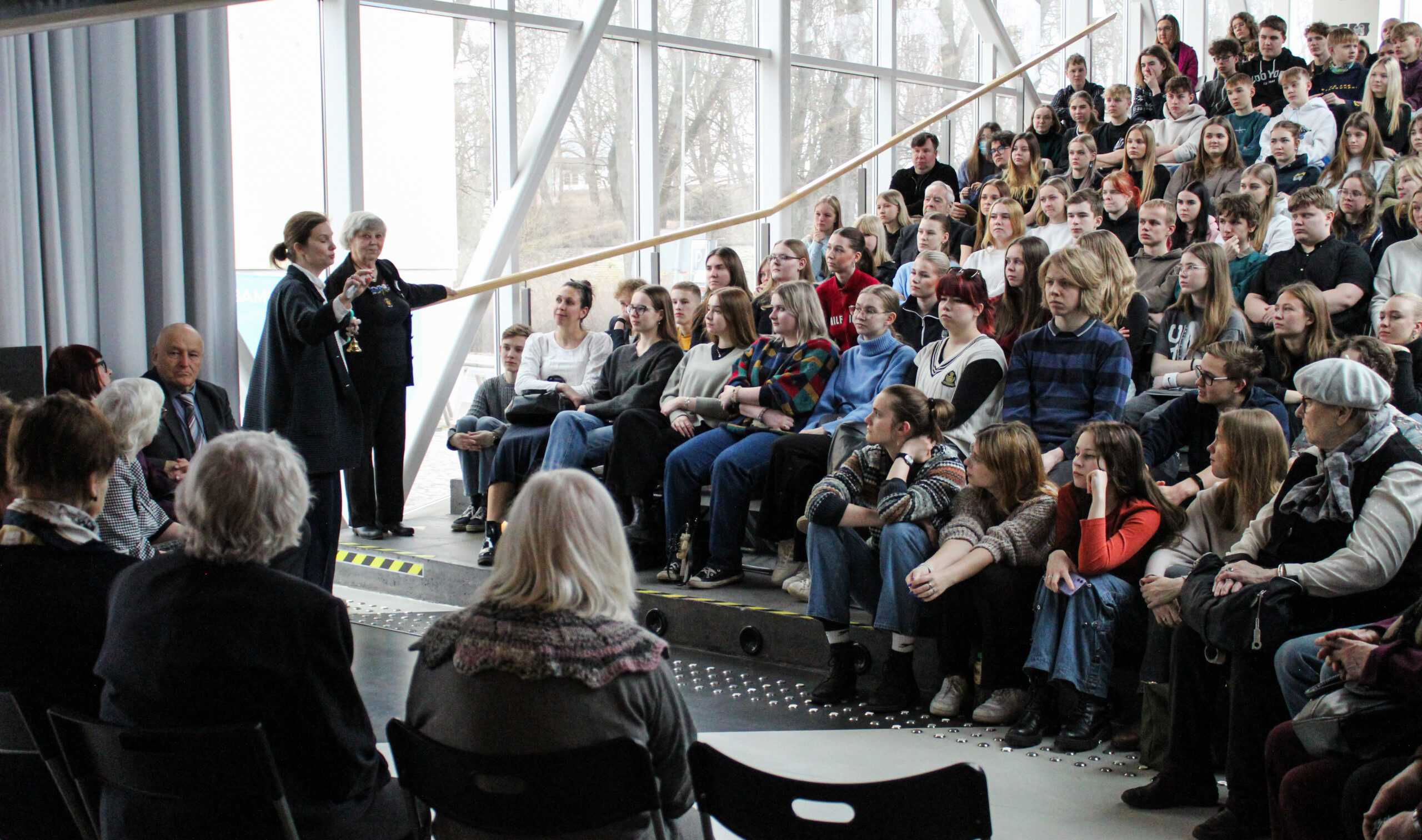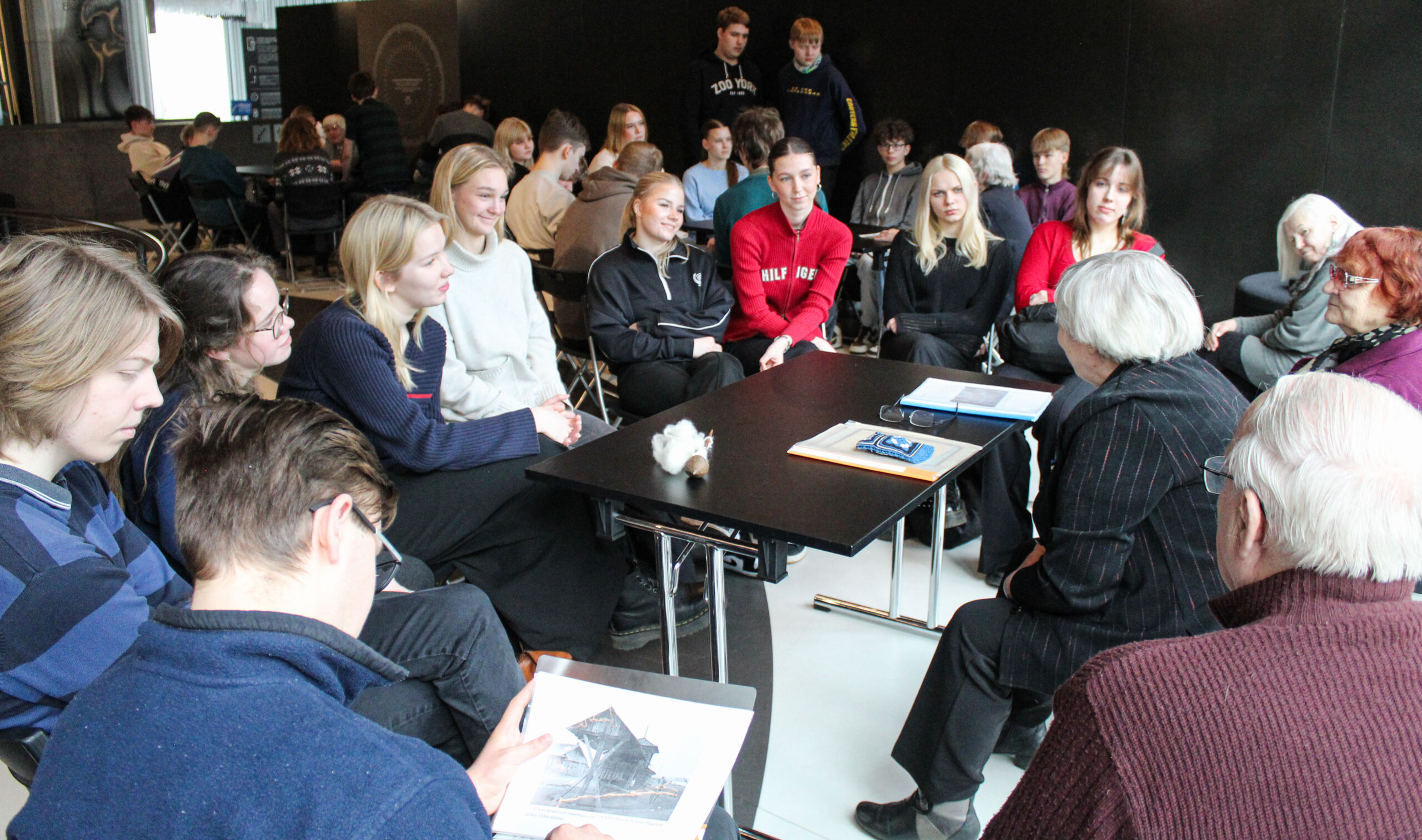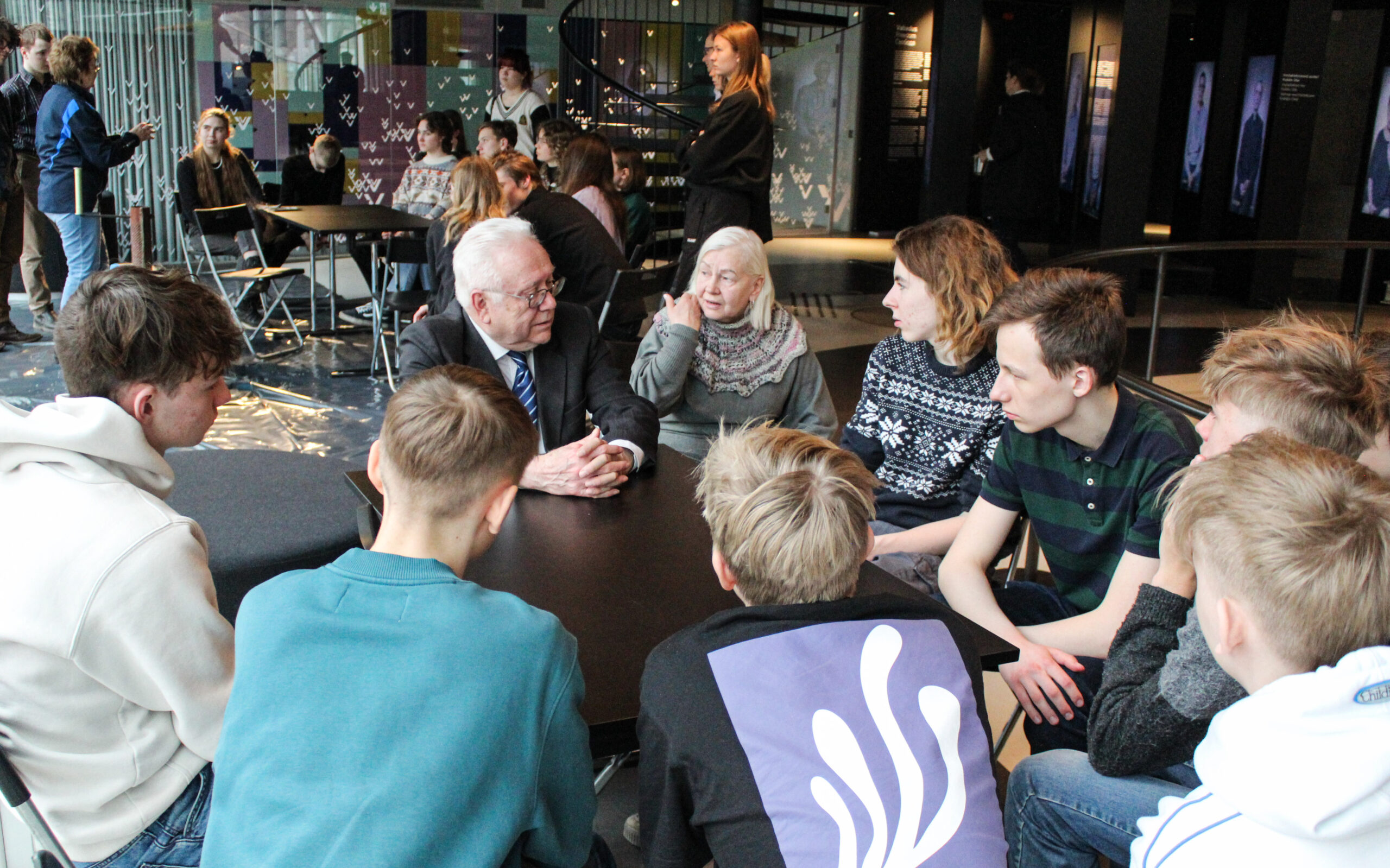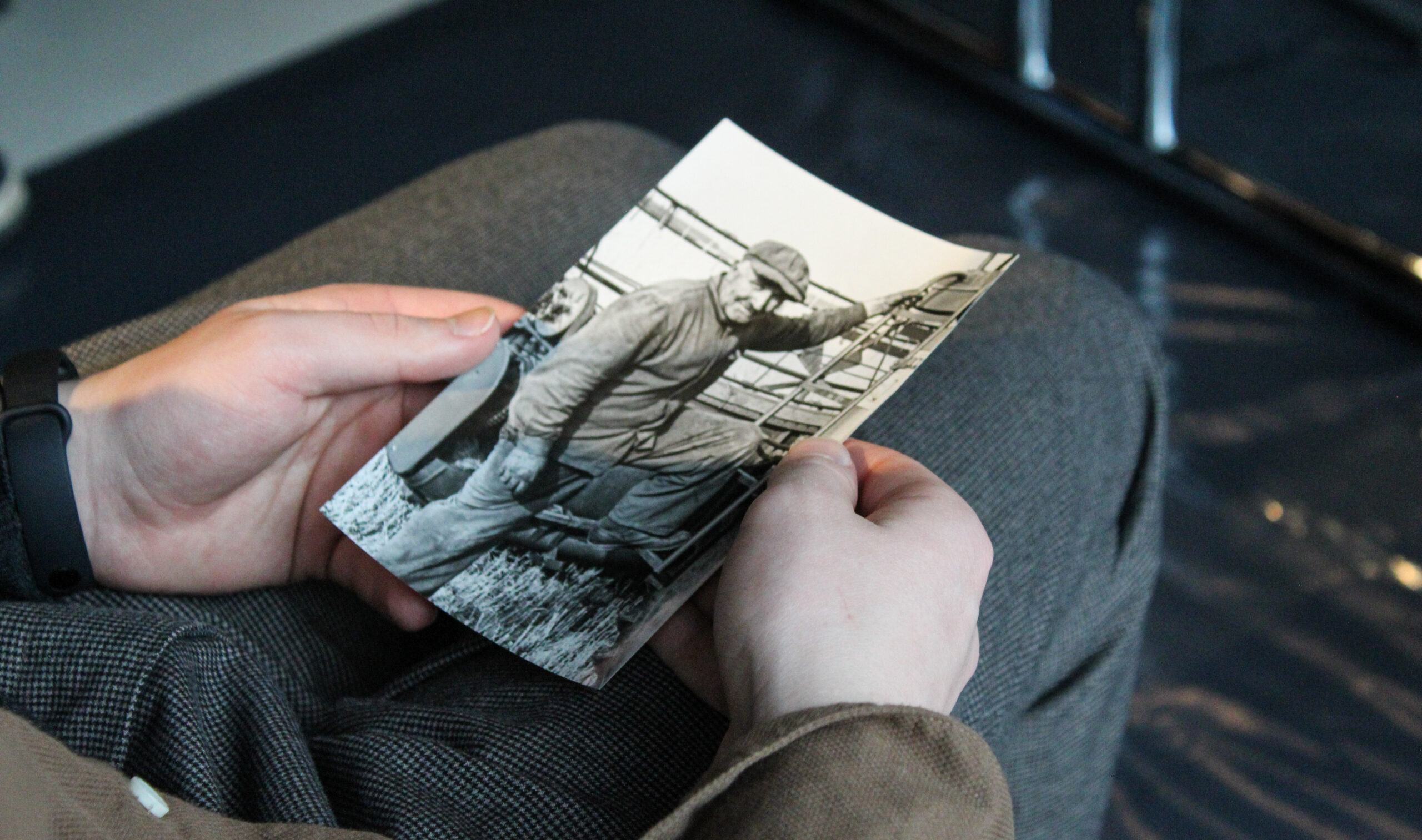March 25, 2024, marked Remembrance Day of the 1949 March Deportations. On this day, 75 years ago, the repressive Soviet regime forcibly took more than 20,000 people, mostly women and children, from their homes across Estonia and deported them to remote parts of Siberia. Most never returned home.
Vabamu’s youth movement NoVa (Noorte Vabamu) invited survivors of the deportations to come to the museum on March 26 and share their personal stories about growing up in Siberia. This was the fourth “Põlvkondade kohtume” or intergenerational event organized by Vabamu, during which former “Siberian kids,” now in their seventies and eighties, shared their stories with youngsters born and raised in independent Estonia. Students from Gustav Adolf and Kristiine gymnasiums in Tallinn, and Tamsalu gymnasium in Lääne-Virumaa, attended the meeting.

Members of the Murtud Rukilille Ühing or Broken Cornflower Association, a nonprofit that represents deportees, also brought along homemade tools that helped them survive the harsh conditions in Siberia.
For example, Eha Kaljuvee showed students how to use a small grain grinder that her father, a well-known farmer in Estonia, built in Siberia from the spare parts of a Soviet tractor: “There was always a queue for that grinder in our village,” she said. “Even the local Russians wanted to use it.”
Tiia Niinemaa showed the teenagers how to make waterproof shoe mending material out of regular thread and a piece of dried tar. The shoes mended with this thread would last several harsh Siberian winters, she said, adding that kids could even enjoy sliding on the ice in those shoes (without telling their parents!).

Enno Uibo, who was just three when he was deported with his family, was surprised to learn that students were mostly interested in what it was like to return to Estonia from Siberia. In 1954, Enno came back with a group of pre-teens because deportees below the age of 16 were granted amnesty after Stalin’s death in 1953. Enno returned home to discover that not much was left of his parents’ house except for part of the basement.
“In our wagon there were active people who got organized the minute we took off,” said Malle Annus, who was just seven years old when she was deported with her mother and two younger sisters. She recalled the three-week-long train ride to the remotest territories of the USSR. “There was a chimney in the middle of the car and opposite it someone sawed a hole in the floor, took the bottom off of a bucket and put it in the hole and cushioned it with bed linen,” she said. “One family had taken a metal bed frame with them that was placed to lean against the wall across from the bucket, and covered it with a blanket. So it became a restroom for all of us!”

The more than 100 students who took part in the “Põlvkondade kohtumine” at Vabamu listened attentively to the deportees’ incredible survival stories. “The things they had to go through were just horrible,” one student reflected after the event. “But I really loved meeting them because they were all such lovely people. It also made me understand that the deportations really happened (during the night, the journey took them 2-4 weeks, and the conditions were really appalling). I also realized there was a difference between the two deportations: In 1941, Soviets mostly deported well-educated people active in political or cultural fields, but in 1949 they took those who refused to join collective farms or had assisted the forest brothers.”
Another student commented that she now realizes how history can be told in numerous ways: “In history classes we can read about the Soviet regime, learn what the term ‘deportation’ means and our teacher will tell us even more. But it makes a real difference to hear these stories from a living source—a person who went through the ordeal of being deported. This experience turns facts into real stories—the number of deportees on paper turns into living humans with faces and lives. It is particularly important not to forget these people and their experiences. Hearing their stories puts our everyday lives into perspective and they help us understand how good our life is in free Estonia.”

